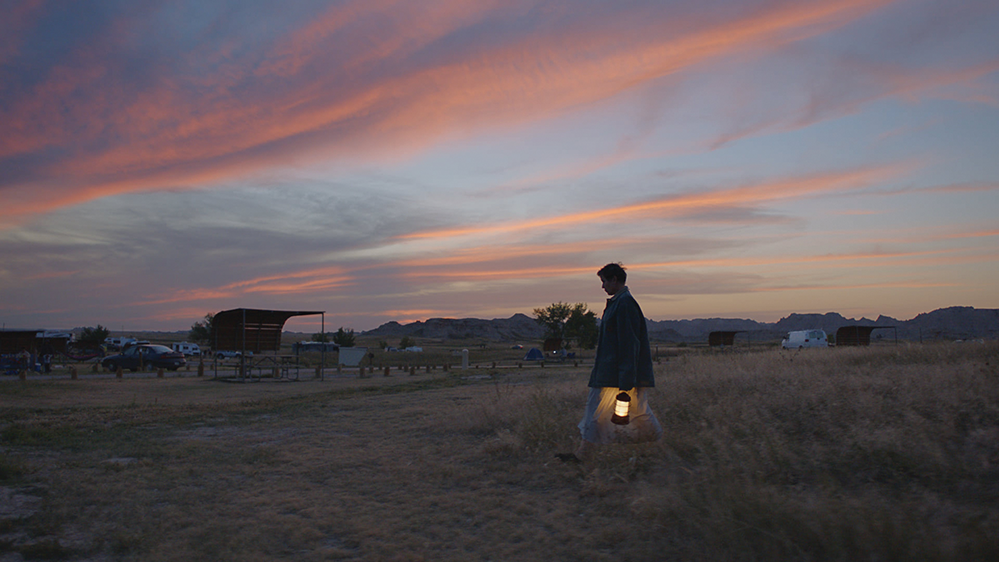★★★★★
“Ad Astra” is a thrilling entry into the ever-shrinking pantheon of excellent films that possess a blockbuster budget but the heart of a small indie movie. Similar in tone to classics in the sci-fi space genre such as “2001: A Space Odyssey” and “Solaris,” “Ad Astra” encourages viewers to consider the complex relationship between heroism and destructive masculinity, while still providing a compelling tale of adventure throughout the cosmos.
Last known for the success of his 2016 film “The Lost City of Z,” director James Gray has constructed another brilliant adventure epic with a grand scale that disguises the deep philosophical premise of the movie. Largely composed of beautiful cinematography overlaid with Major Roy McBride’s (Brad Pitt) monologues on toxic masculinity, “Ad Astra” delves deep into the human psyche while still finding space for moments of levity and thrilling action.
“Ad Astra” opens on McBride traveling outside the International Space Antenna to fix a malfunctioning crane. As the camera careens around to demonstrate the utter vastness of space and the true beauty of Earth when removed from human society, Roy notices a flash of blue light in the distance.
The beautiful tranquility of zero gravity exploration is brutally interrupted by electrical malfunctions throughout the station that sends McBride spiraling down to Earth. The following sequence of Roy flailing mid-free fall back to earth is truly exceptional and deserves to be ranked in the greatest feats of cinematography and sound editing. Fortunately, and almost unbelievably, Pitt manages to survive the fall with a parachute and no small amount of luck.
After this brush with death, Roy is launched into a search for his father, Clifford McBride (Tommy Lee Jones), presumed to be dead after going missing on a mission to discover extraterrestrial life that is causing the disastrous power surges that threaten to destroy human life.
The plot never seems to take a break and continues to lead McBride closer to his father while still allowing plenty of quiet, reflective moments accompanied by emotional monologues. Although it reads as a cliche, McBride comes to understand fully what he is leaving behind on Earth the farther away he gets from it.
Through cinematography that manages to be both simple and intricate, Gray creates beautiful imagery that still does not distract from the true emotional weight of the film. Sequences on the moon and a desolate space shuttle are breathtaking and nerve-wracking in their slow unraveling of danger.
Gray also manages to slip in genuinely hilarious moments of levity, such as Roy traveling commercially to the moon and blend McBride’s social commentary with timely jokes about the commercialization of space. It is a testament to the impressive screenplay, co-written by Gray and Ethan Gross, that a “Mad Max: Fury Road”-esque chase by pirates from the moon and a murderous primate never feel like anything other than supremely terrifying and entirely plausible in an otherwise reflective film.

One cannot talk about “Ad Astra” without discussing the emotional complexity of Pitt in his portrayal of a stoic man feeling conflicted about the myth of heroism. In the hands of a less competent actor, “Ad Astra” could have been unbearably cold and devoid of emotion. However, Pitt’s emotionally icy yet honest monologues manage to have an undertone of warmth which allows the viewer to immerse themselves in the emotional growth.
With an emotional facade that slowly falls during the duration of the film, Pitt fully embodies the character of McBride and generates a stunning deconstruction of a man that constantly needs to explore the external world rather than recognize the depth present in the people around him.
Although “Ad Astra” can and should be criticized for the lack of solid female characters, there is an argument to be made that there is truly only one fully formed character: McBride. Gray does not concern himself with subplots and interpersonal conflict. Instead, he zeroes in on a single individual and his relationship with his father.
That being said, Helen Lantos (Ruth Negga) is woefully underutilized as a character, but manages to single-handedly steal the few scenes in which she is present. She causes McBride to question heroism and whether he is destined to repeat the sins of his father in the pursuit of egoistic goals, tactfully driving the moral questions at the heart of the film.
“Ad Astra” is a breakthrough film that combines stunning cinematography with an emotional narrative that sees Pitt candidly addressing toxic masculinity under the guise of a movie about a journey through space. Although the film might not appeal to wide audiences due to the highly introspective nature of the story, “Ad Astra” makes a convincing argument to not only be counted as one of the best films of 2019, but also added to the growing canon of great space films.




















